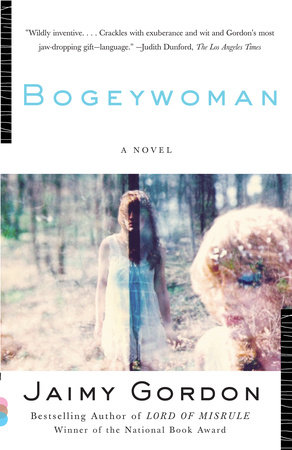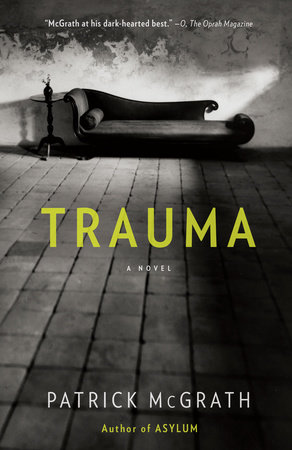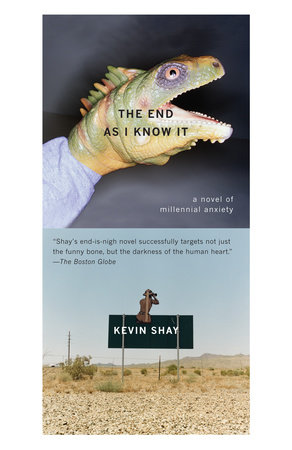Author Q&A
A Conversation With Bret Lott
Random House Reader’s Circle: Though you are primarily regarded as a novelist—you have published six of them, the seventh due out soon—this is your third collection of stories. What do you find so compelling about this fictiveform?
Bret Lott: I love the short story because of its ability to work under your skin in a way a novel can’t. Novels are big animals that can wander around a bit, and can park for a while and mosey and all kinds of things. But a story is a pinprick, a kind of jewel outside of its setting—a diamond in the palm of your hand you can appreciate for its simplicity. I know I’m allowing my metaphors to run riot here, but it’s difficult to say, save for the fact there is a purity to the short story form, a kind of guerilla tactic to them that makes them all the more surprising and a lot of times more memorable than a novel.
RHRC: What are some of the challenges to writing stories that you might not have to face when writing a novel?
BL: Keeping it to the point. Not that a story has to have a point. Rather, it is that a story has a much smaller canvas than a novel does. I like to think of novels as murals, whereas a story is an intricate cameo. The challenge, therefore, is to stay in scene, stay on character, stay on detail. Stay on target. I love the short-story form above the novel because it calls for a kind of precision that makes one see as deeply as possible the characters and situation the story has to reveal. A novel can wander, make side trips—excursions, if you will. Which isn’t to say it can be sloppy—there has to be the same precision in a novel as in a story.
RHRC: In the Washington Post review of The Difference Between Women and Men, Carolyn See writes, “If not for Bret Lott, who would tell us about the RC Cola salesmen, the food brokers, the small-time insurance agents, the couples who are about six steps away from being homeless, if they stop to think about it, except that they don’t have the time to stop and think about it?” Do you agree that your work addresses these issues of class?
BL: I do. Class issues are always present in my writing, though it’s not anything I think about when I sit down and begin to see the world I am going to write about. Thinking about capital-I Issues and that sort of thing while you write would be like a jazz musician thinking abut the scales while he reels out a beautiful line he hasn’t ever played before. I hope the class issues aren’t the focus so much as the inherent value of the lives involved. The fact that Carolyn See, having read the stories, asks the question she does is the very essence of the “special value” I would hope my work has. I want readers to see the lives of other people as being valuable in and of themselves, and to have to pause and think of RC salesmen and financially troubled couples as being people. An editor who rejected my first novel told me that the most important thing she got out of reading The Man Who Owned Vermont was that she would never see the people who work in a grocery store—the salesmen and clerks and cashiers and stockers—the same way again. Although she didn’t take the book, I still look back at that moment with the greatest sense of fulfillment: the story made someone see people around her whom she had previously ignored as being worthy of her attention—she was seeing them now with empathy.
RHRC: How do you know when you begin a piece of writing that it will be a story, or a novel, or a work of nonfiction?
BL: Some stories have turned into novels, some novels have yielded stories; some essays have been written because the fictive form seemed to cheapen the true experience. This may sound cheesy, but it’s about listening to what the story itself wants to be, and not making it what you want it to be. Listen, and write.
RHRC: Throughout your career as a writer, you have also been a teacher of writing. How did both your writing life and your teaching life begin, and how do they work together (or not)?
BL: I got started by reading my brains out when I was a kid, though back then I wasn’t reading with any idea of becoming a writer. I simply enjoyed stories, enjoyed going somewhere else, enjoyed finding out what people do in certain circumstances. That is, I wanted to find out what happened and why, which is all a good story gives us. I ended up having four majors in college: forestry, marine biology, education, and then, finally, English. In addition, I took a year off halfway through college to become an RC Cola salesman, believing at that point that college wasn’t for me. But after a year of that, I knew I wanted to go back to school, and so, before reenrolling at Cal State Long Beach, I took a course at Golden West Community College to get myself used to having assignments again, readings and deadlines and all that. The only nights I had open were Tuesdays, and the only course that was open on Tuesday nights was creative writing, so I used to show up to class in my RC uniform on Tuesday nights, and I had a blast writing things, though I still had no notion of becoming a writer. I then took another creative writing course once I was back at Cal State, and the professor read out loud a single sentence of an entire story I’d written for class. Then he said, “That’s a writer’s sentence,” and I remember thinking, Maybe I want to do this. I know this is a long-winded answer, but it is to say that my writing life has been inextricably entwined with that of teaching; without my teachers, I wouldn’t be here today. And as a teacher now, I continue to be invigorated by my students, as the things I teach them are things I must—I must—practice every moment I am writing. I tell my students on the first day of class that the things I wrestle with as an author are precisely the same things they will have to wrestle with: How does this character hold her coffee cup? What does this character see as he walks from this room into that room? What is she thinking as she parks the car in the lot outside the grocery store? These are what I work with, and there have been no breakthroughs beyond this in storytelling, ever. So my students are always, always my peers: we are all in this together, trying to tell stories. I am always preaching the basic elements of writing: true dialogue, detailed settings, pace, character development. And in preaching that relentlessly, I have no choice but to see in my own writing the need to keep to the basic elements of writing: make that dialogue sound true, make this room seem real, make this character seem alive. There’s nothing more than that, and it is what informs every class I have ever taught, and so I have no choice but to let it inform my own writing life. I also value the joy that young writers bring to the art form, their wonder at reading for the first time a terrific story by one of the masters, and then finding in each others’ writing what works and doesn’t work. I treasure working with students who are actively trying to find their own voice and vision—that is invigorating, and reason enough to continue to find that kind of joy in my own writing.
RHRC: Do you have a list of favorite stories? If so, can we get a glimpse of it, and can you tell us why these are your favorites?
BL: In fact I do. Sort of like my fantasy football team. And though I have read and appreciated hundreds of stories, these stories are my favorites simply because they are about things that happen to people the authors have made me care about. For that reason, I want to make certain no one misunderstands the summary statements I’m giving for each one as being the only reason to read them. Every one of these has manifold reasons to be read, chief among them the joy of reading. They’re in alphabetical order, too, lest anyone think I’m putting one above another!
“Kiss Away” by Charles Baxter
The quality of Baxter’s prose—its subtlety and rock-solid
strength—is what I most enjoy about this story. And of
course there ’s also the mystery of who this boyfriend is
and whether or not he can be trusted, giving us the sense of
“mystery” every good story has to have.
“1/3, 1/3, 1/3” by Richard Brautigan
I teach this on the first day of every course as a means to
remind students of the playfulness of story and to show the
quality of description I want them to learn: it’s not just
what something looks like, but also the spirit of the thing
described that is at stake.
“A Small, Good Thing” by Raymond Carver
Carver is my favorite writer, period, and with this story we
see all the virtues of his writing: the precision of his sentences,
the quality of his details, a moving plot, and, towering
above these, his compassion for his characters, from
the grieving mother to the bewildered baker simply trying
to make sense of his own lost life.
“Rock Springs” by Richard Ford
This story seems to be about a “bad” character, but he is,
finally, a nice guy. The magic to this story is Ford’s ability
to make us care about this man and to see, finally, ourselves
in someone we would most likely dismiss.
“Redemption” by John Gardner
There are two grieving points of view here, but the point
of view of the father, once he has reckoned with his grief,
disappears, leaving Jack Hawthorne alone to wrestle with
the death of his brother. This story is a tour de force, and
it breaks my heart every single time I read it.
“Water Liars” by Barry Hannah
This is one of the funniest and most poignant stories I have
ever read, and the turnabout here—telling the truth is the
most damning thing anyone out at Farte Cove can do—
makes the story one of the few that can successfully sneak
up and bushwhack you. And the dialect is pitch-perfect.
“The Things They Carried” by Tim O’Brien
This story illustrates the importance of detail, and the
miraculous way in which details can forward a plot, develop
characters, and create setting all at once.
“A Good Man Is Hard to Find” by Flannery O’Connor
This begins as a kind of sitcom, only to end up one of the
most brutal stories of all time, and is one of the great examples
in literature of how the best stories set up expectations
and then reverse them altogether.
RHRC: Finally, in a time when it seems fewer and fewer people are reading, why does literature matter?
BL: Because we are in a world that is swamped with itself, and with people whispering and shouting in our ears about what is happening this very moment everywhere in the world, whether it be what the celebrity du jour wore or didn’t wear last night, or the specter of global annihilation. Literature allows us time to think, to contemplate, to be quiet, and to breathe deeply. That’s why it matters.




























